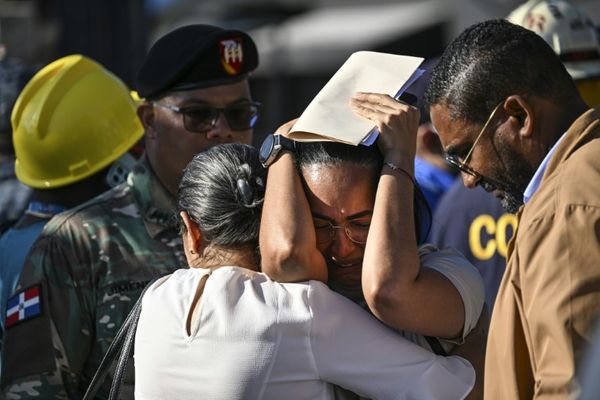If, as is sometimes mentioned, war reflects geo-political incompetence, then the first quarter of the 21st century reflects incompetence of the highest order, with several nations contributing to this state of affairs. Europe, Asia, and Africa seem to be in a state of permanent dissonance today, while North and South America are plagued by problems of varying magnitude. All this has set the stage for multi-polar disorder.
Multi-polar disorder
Liberal democracy confronts a multitude of dangers. On September 11, 2001, with al-Qaeda attacking the Twin Towers in New York, terrorism gained a new dimension. A few years later, we saw the rise of the Islamic State, which even talked of establishing a state of its own. Meanwhile, there were, and still exist, many lesser-known terrorist outfits such as the Pakistan-backed Lashkar-e-Taiba, which was responsible for carrying out attacks in Mumbai on November 26, 2008, and the Boko Haram in Africa, which continues to indulge in terror attacks in different regions of the globe.
The attack on the State of Israel by Hamas, a Palestinian terror outfit, however, represents a new high in the evolution of terrorism. That a little-acknowledged Palestinian terror outfit could take on Israel, which boasts of one of the most powerful armies in the world, is having a seismic impact across the world. Hence, there appears to be no end in sight to the challenges posed by fanaticised groups intending to achieve their ends and reinforce their beliefs.
The attack on Ukraine by Russia on February 24, 2022, though, falls into a different category, viz., of conventional conflicts, but is nevertheless highly disconcerting. The prolongation of the conflict, which was not expected to last for more than a few weeks, to well over 18 months, represents an even more disturbing trend. Even as the war continues to fester, neither Russia nor Ukraine (including NATO) is willing to consider a pause. A plethora of new technologies and strategies have proved insufficient to sort out matters on the battlefield. With each month, the risk of a wider conflagration is going up, and the conflict shows few signs of reaching a resolution.
A new battleground has opened up very recently in West Asia, following the terror attack by Hamas on Israel, which is turning into an all-out conflict. Much of the West is backing Israel, while the Arab world is left with little choice but to back Hamas. What is disconcerting is that several weeks into the conflict, the threat of an all-out war (in a region that has seldom had long periods of peace) looms large. The two-state solution for resolving the Palestinian conflict has, in turn, been confined to the detritus of history and the region is all set for another half a century of conflict. The Abraham Accords and other peace accords have fallen like ninepins.
There is worse to come. A massive United States Naval deployment, from the Mediterranean to the Gulf of Oman, in the wake of the Hamas-Israel conflict, has the potential of bringing Iran-backed Shia militant organisations (such as the Hezbollah) directly, and Iran at a later date, into the conflict. This would substantially alter the nature of the conflict and could lead to unpredictable consequences.
Uneasiness in the Indo-Pacific region
Notwithstanding the West Asia imbroglio, it is the uneasy situation in the Indo-Pacific region that contains even greater potential for a wide-ranging conflict — one that could well involve the U.S. and China directly. This region is already a byword for strategic competition and contestation. As it is, the U.S. and China have little space for cooperation here, as elsewhere, but both now seem intent on enlarging the scope of their conflict. The U.S. appears to think that with China’s growth having slowed, accompanied by its inability to get advanced technology from the West, it now has the upper hand.
China, for its part, is vigorously pursuing its two contradictory goals viz., to checkmate the ‘U.S.-dominated world order’ and in turn ensure the success of a China-dominated order. Issues such as Taiwan are, hence, not receiving the attention they deserve.
As of now, the West is merely intent on replicating the tactics it employed in Ukraine to stymie Russia’s advance, in the Indo-Pacific, ignoring the fundamental difference that exists between the situation in Europe and in the Indo-Pacific at present. The East, for instance, has no military arrangement like the NATO and has at best some loose untested security arrangements (such as AUKUS and the Quad) to confront China. Equally important is that few countries in Asia are ready for a military confrontation with China.
Technology risks
Additionally, in the category of grave risks that confront the world today are many that belong to the technology domain — more specifically Artificial Intelligence (AI) and cyber. Even as the digital threat scene has verily exploded, digital uncertainty is making a mockery of the established order. As growing numbers of people, cognitively and psychologically, become dependent on digital networks, many critical aspects of their thinking and functioning would be conditioned by AI. The emergence of generative AI will be the real game changer, and experts predict that the situation could become even more critical in the near future. The real risk is that it could alter the very fabric of nation states, with truth itself becoming a casualty — the deepfake syndrome.
The use of AI, especially for military and security purposes, is cause for utmost concern. It has to be managed with great care, for the dangers are immense. AI is capable of being vitiated, and subject to different types of ‘adversarial attacks’ viz. ‘poisoning’ (which typically aims to degrade a module’s ability to make relevant predictions), ‘backdooring’ (which involves a malicious trigger input that causes the AI module into misclassifying inputs), ‘evasion’, etc. The need for extreme caution, hence, cannot be overemphasised.
The cyber domain and the cyber threat again pose serious security risks. The world is already aware of threats such as Ransomware and Phishing, as also the Zero-day syndrome, but there is much more to come. Digital trackers logged more than 5.5 trillion cyber-attacks worldwide in 2021 (over 14.5 billion attacks per day). Since then, the scale of attacks has been increasing in geometrical progression. The twin threats from AI and cyber are thus poised to emerge as the biggest dangers we face and will be the critical elements in future wars.
Meantime, quantum computing is another dimension that is likely to transform the world. Quantum’s unique ability to crunch stacks of data is already reshaping certain designated sectors. Quantum AI simulation denotes a mind-boggling degree of effectiveness and efficiency but there are equally intrinsic risks attached to it.
Another domain of global risk is health, for as humanity advances, health has become a critical factor of everyday existence. The COVID-19 pandemic has been characterised as among the world’s worst epidemics. The health forecast is that more such epidemics are slated to occur.
In the final reckoning, many experts are of the view that climate change and climate change health issues will be among the biggest global risks as the 21st century advances.







